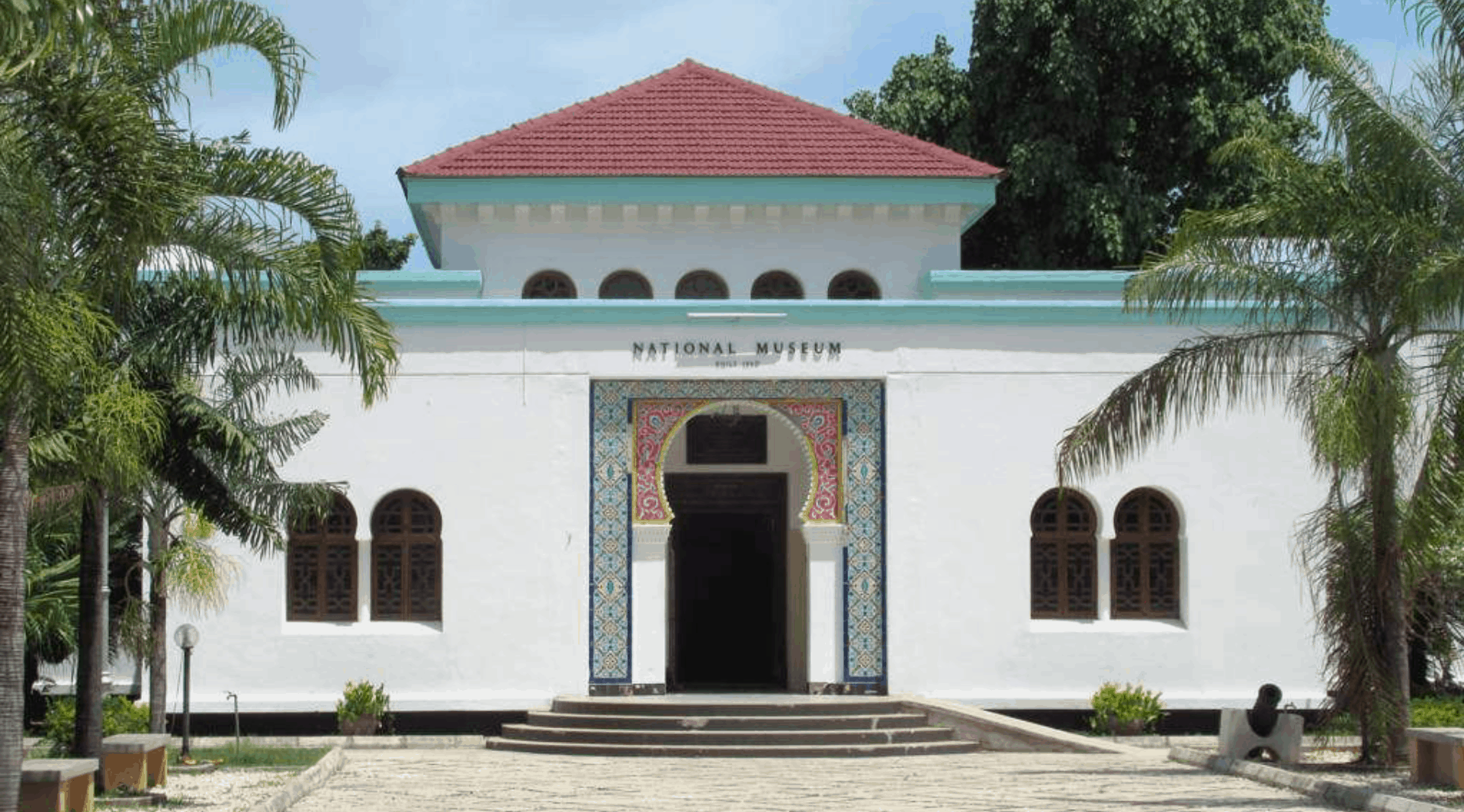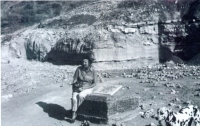While perusing museum records in Dar es Salaam last week, I came across an obituary of one Dr. Louis S.B. Leakey. Dated 1974, two years after his death, the letter was written by the late Amini Mturi, Tanzanian archaeologist and then director of the National Museums of Tanzania. In it, Mr. Mturi recounted the endless accomplishments Dr. Leakey made in the field of paleoanthropology. One sentence in particular caught my eye:
“Although Dr. Leakey was a researcher, we in Tanzania also remember him as a person who contributed greatly to the protection and preservation of our archaeological sites.” (Tanzania Notes and Records, 1974)
Mturi goes on to describe how Mary Leakey’s 1959 discovery of Zinj1 at Olduvai launched Tanzania onto the world stage. Mary and her husband Louis used this extraordinary discovery not only to gain publications in high-profile journals or to get funding from National Geographic, but they also built something that would last far beyond their tenure at Olduvai: a site museum. From 1961-1970, before the Tanzanian government stepped in to help manage Olduvai, Mary and Louis invited visitors to “On the Spot” museums, where their excavated fauna and artifacts remained uncovered in situ for the public to see. In 1970 Mary officially opened the Site Museum overlooking the gorge, which eventually held an exhibition of one her other great discoveries—the 3.4 million year old Laetoli footprints.
Today Olduvai Gorge, in addition to providing an elaborate record of human evolution, is one of the most visited archaeological sites in the world. An estimated 100,000 people visit this historic site every year. By establishing the museum, Mary and Louis helped Olduvai become an integral component of Tanzanian cultural heritage, while also bringing in tangible benefits in the form of revenue and local employment opportunities.
I also was influenced by the Leakeys’ efforts, as Olduvai was the first place I ever excavated. I was 19, and spending a semester at the University of Dar es Salaam when Fidelis Masao invited me to come along on his field school. Now, as I embark on my own dissertation research, a 12-month endeavor in Tanzania graciously funded by Fulbright-Hays, I must also consider what the lasting impact of my work will be. In this post I will discuss the present and future of prehistory research in Tanzania, and how foreign researchers play an important role in the continuation of cultural heritage preservation.
Present—A Primer on Conducting Research in 2015
Tanzania remains a hotspot for scientists, both foreign and local. Since 2008, the National Museum of Tanzania in Dar es Salaam has undergone intense renovations, which eventually led to the repatriation of Olduvai cultural and fossil material that had been stored in Nairobi, Kenya, for decades. Many of the most informative fossils in human evolution (e.g. OH 5, OH 7, and OH 9) are now stored in the vault in Dar es Salaam. In addition to hominin remains, abundant lithic and faunal assemblages are stored in the museum. The University of Dar es Salaam plays an important role as well, as hundreds of students are trained every year in archaeology and museum studies.
Today, prehistory research in Tanzania is executed through a multi-faceted and hierarchical system that ensures the preservation of cultural heritage. While some foreigners consider this process overwhelming and bureaucratic, it is actually quite simple.
All scholars wishing to study archaeology or paleontology should be familiar with three arms: COSTECH, Immigration, and Antiquities. COSTECH, the Commission for Science and Technology, is the first step for most researchers. This stop requires three forms: an application form, CV form, and project proposal, along with three passport sized photos and a $300 application fee. If you are abroad, you can email these documents, although it is much easier if someone on the ground can submit them in person. Processing of COSTECH permits usually takes about two months, although this time can vary. Communication is key.
After obtaining a COSTECH research permit one must proceed to Immigration and obtain a Class C Residence Permit (currently a fee of $550 USD). This permit is valid for one year and takes the place of a visa. This process can also take quite some time (~6 weeks). A brand new Immigration office (Uhamiaji House) opened a few years ago in Kurasini, and lines can be long, so it’s best to arrive by 8am. Many foreign researchers seek help from someone located in Dar es Salaam to facilitate this process.
Finally, many projects require cooperation with the Department of Antiquities (Mambo ya Kale), a branch of the Ministry of National Resources and Tourism. Anyone planning to conduct fieldwork in any way (survey, excavation) must register his or her research with Antiquities. This will incur a cost amounting to 10% of the project budget. Antiquities will then assign a representative to accompany you to your field site. This person is vital in introducing you and your team to all local authorities, and will receive a daily salary from you. Finally, as I have learned just this past week in my own permit process, even museum-based research sometimes requires Antiquities clearance. This includes the study of any collections stored within the Ngorongoro Conservation Area (NCA).

The National Museum in Dar es Salaam, Tanzania. With Indian and Arabic influences visible in the architecture, the museum is located only a few kilometers from the Indian Ocean.
Future—“Ancestors For Us All”
Glynn Isaac, after a panel symposium in New York, wrote a piece discussing how scientists can broaden international participation in paleoanthropology (Isaac 1985). He described an imbalance in which the bulk of human origins evidence is located in certain parts of the world (e.g. eastern Africa), but much of the research is carried out by foreign researchers. To combat this imbalance, he called for the training of local technical staff and recruitment of young scientists through university engagement and field schools. In doing so, Glynn cited the analogy of the “chicken and the egg”:
“Public knowledge, interest, and pride are important as eggs to justify and secure support for inquiry into prehistory, but first one has to have a chicken in the form of trained personnel and effective museums!” (Isaac 1985)
These ideas still resonate in Tanzania today. We as foreigners cannot expect to merely show up, excavate, drop off fossils, and find a system that works like a well-oiled machine on its own. It is the responsibility of all parties to preserve cultural heritage. Several projects have already answered Glynn’s call and have made great strides. Organizations like PAST, the Leakey Foundation, and the Wenner-Gren Foundation have played colossal roles in this endeavor, particularly as funding supporters of African researchers. Fidelis Masao and his American colleagues (through OLAPP) helped paved the way in establishing a field laboratory the Natural History Museum Arusha. Indeed OH 65 was cleaned and studied at this facility, and many Olduvai post-Leakey collections are now at the museum in Arusha.
In Kenya another important project called Digital Kitambo, managed by David and Kristina Dziedzic Wright, seeks to establish a unified digital database of the museum, which is no small undertaking. Finally, the Koobi Fora Field School here at GW has a working memorandum of understanding with the National Museum of Kenya, and is committed to recruiting young scientists from around the globe, especially Kenya, Ethiopia, Tanzania, and South Africa, to participate in Turkana field research. Surely there are more projects than I have space to list here, but suffice it to say that paleoanthropology is changing, slowly but surely.
For Tanzania, 2015 is a year of opportunity, as Dar es Salaam gears up to host the bi-annual meeting for the East African Association of Paleontology and Paleoanthropology (EAAPP) on August 3-6. Celebrating the 50-year anniversary of the announcement of OH 7, the type specimen of Homo habilis, this meeting provides a unique opportunity to bring together African and international researchers alike, as well as museum representatives, to discuss cutting edge research and cultural heritage, with a spotlight on Tanzania.
And what about after 2015? Given the globalized, technologized atmosphere of modern-day research it is my hope that the efforts of Mary, Louis, and Glynn will continue to be expanded upon in innovative ways. Online courses offer a new opportunity for anyone with an Internet connection to attend top-notch academic courses. Three-dimensional scanning of artifacts and fossils means that anyone can study and appreciate paleoanthropological data, assuming the scans are available open access. Finally, it seems that new field schools, graduate fellowships, and training opportunities are being announced every day, investing in the next generation of scholars.
Of course, there is still work to be done. While Tanzania has come very far in recent years, there are still needs (the elusive “chicken” that Glynn refers to) especially in the form of museum infrastructure, personnel, and technology. We can invest in these needs, for example, by helping to create a casting lab, bringing in computers and 3D scanners, or providing free technical training. I use the word invest purposefully here, because the return on these investments will be great, not only for Tanzanian heritage but also economy.
Last year at the Pan-African Archaeological Congress in Johannesburg, on the final morning there was a plenary session on heritage. At the end of a particularly interesting presentation by J. Giblin, the author made a point that remains clear in my mind: “This is not to say that local communities are unconcerned with the ancient past. Rather, for many, the past that matters the most is the one that has just happened.”
Undoubtedly Tanzanians take pride in their ancient past. Indeed it is a source of national pride and unity. However, it is very difficult to think about the past when the tangible needs of the present are much more real. The sooner foreign researchers understand this, the sooner we can collaborate to build a better, balanced research system that not only investigates, but also celebrates, our shared ancestry.
References
Isaac, G., 1985. Ancestors for us all: towards broadening international participation in paleoanthropological research, in: Delson, E. (Ed.), Ancestors: the Hard Evidence, Alan R. Liss, New York, 346-351.
Mturi, A.A., 1974. Dr. Louis S. B. Leakey, 1903—1972, Tanzania Notes and Records 75, 71-74.
1 Zinjanthropus boisei was the name given to OH 5 (Olduvai Hominid 5) and it is the type specimen of what is now considered the genus Paranthropus boisei.


